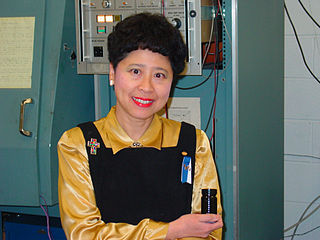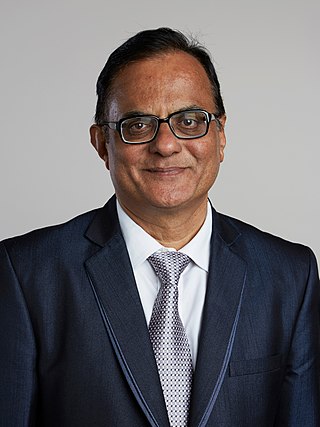
Carbon black is a material produced by the incomplete combustion of coal and coal tar, vegetable matter, or petroleum products, including fuel oil, fluid catalytic cracking tar, and ethylene cracking in a limited supply of air. Carbon black is a form of paracrystalline carbon that has a high surface-area-to-volume ratio, albeit lower than that of activated carbon. It is dissimilar to soot in its much higher surface-area-to-volume ratio and significantly lower polycyclic aromatic hydrocarbon (PAH) content. However, carbon black can be used as a model compound for diesel soot to better understand how diesel soot behaves under various reaction conditions as carbon black and diesel soot have some similar properties such as particle sizes, densities, and copolymer adsorption abilities that contribute to them having similar behaviours under various reactions such as oxidation experiments. Carbon black is used as a colorant and reinforcing filler in tires and other rubber products; pigment and wear protection additive in plastics, paints, and ink pigment. It is used in the EU as a food colorant when produced from vegetable matter (E153).
Before Present (BP) years, also known as "time before present" or "years before present (YBP)", is a time scale used mainly in archaeology, geology and other scientific disciplines to specify when events occurred relative to the origin of practical radiocarbon dating in the 1950s. Because the "present" time changes, standard practice is to use 1 January 1950 as the commencement date (epoch) of the age scale. The abbreviation "BP" has been interpreted retrospectively as "Before Physics", which refers to the time before nuclear weapons testing artificially altered the proportion of the carbon isotopes in the atmosphere, which scientists must now account for.

Monthly Notices of the Royal Astronomical Society (MNRAS) is a peer-reviewed scientific journal covering research in astronomy and astrophysics. It has been in continuous existence since 1827 and publishes letters and papers reporting original research in relevant fields. Despite the name, the journal is no longer monthly, nor does it carry the notices of the Royal Astronomical Society.

Library Journal is an American trade publication for librarians. It was founded in 1876 by Melvil Dewey. It reports news about the library world, emphasizing public libraries, and offers feature articles about aspects of professional practice. It also reviews library-related materials and equipment. Each year since 2008, the Journal has assessed public libraries and awarded stars in their Star Libraries program.

Materials Today is a monthly peer-reviewed scientific journal, website, and journal family. The parent journal was established in 1998 and covers all aspects of materials science. It is published by Elsevier and the editors-in-chief are Jun Lou and Gleb Yushin. The journal principally publishes invited review articles, but other formats are also included, such as primary research articles, news items, commentaries, and opinion pieces on subjects of interest to the field. The website publishes news, educational webinars, podcasts, and blogs, as well as a jobs and events board. According to the Journal Citation Reports, the journal has a 2020 impact factor of 31.041.

Advanced Functional Materials is a peer-reviewed scientific journal, published by Wiley-VCH. Established in February 2001, the journal began to publish monthly in 2002 and moved to 18/year in 2006, biweekly in 2008, and weekly in 2013.
The Energy Biosciences Institute (EBI) is an organization dedicated to developing new sources of energy and reducing the impact of energy consumption. It was created in 2007 to apply advanced knowledge of biology to the challenges of responsible, sustainable energy production and use. Its main goal is to develop next-generation biofuels—that is, biofuels that are made from the non-edible parts of plants and reduce greenhouse gas emissions.

Deborah Duen Ling Chung is an American scientist and university professor.

Chemistry of Materials is a peer-reviewed scientific journal, published since 1989 by the American Chemical Society. It was founded by Leonard V. Interrante, who was the Editor-in-Chief until 2013. Jillian M. Buriak took over as Editor-in-Chief in January 2014. She was followed by Sara E. Skrabalak, who assumed the position of Editor-in-Chief in November 2020.

The Journal of Materials Science is a weekly peer-reviewed scientific journal covering all aspects of materials science. It was established in 1966 by Robert W. Cahn and is published by Springer Science+Business Media. The journal incorporated Journal of Materials Science Letters in 2003 and Interface Science in 2004. The Editor-in-Chief is C. Barry Carter.
The Journal of the Optical Society of America is a peer-reviewed scientific journal of optics, published by Optica. It was established in 1917 and in 1984 was split into two parts, A and B.
Peter Thrower is a professor emeritus of materials science and engineering at Pennsylvania State University, and a former editor-in-chief of the scientific journal Carbon, a post he has held between 1982 and 2013. A special issue of Carbon was published in his honor in August 2012. He also edited the review journal Chemistry and Physics of Carbon from 1973 to 1998. He is a specialist on carbon in all its forms.
Christopher W. Jones is an American chemical engineer and researcher on catalysis and carbon dioxide capture. In 2022 he is the John Brock III School Chair and Professor of Chemical & Biomolecular Engineering and adjunct professor of chemistry and biochemistry at the Georgia Institute of Technology, in Atlanta, Georgia. Previously he served as associate vice president for research at Georgia Tech (2013-2019), including a stint as interim executive vice-president for research in 2018.

John Robertson FRS is a Professor of Electronics, in the Department of Engineering at the University of Cambridge. He is a leading specialist in the theory of amorphous carbon and related materials.

Ajay Kumar Sood is an Indian physicist and researcher currently serving as the 4th Principal Scientific Adviser to the Government of India.
Nicola Pinna is a chemist and professor at the Humboldt University of Berlin.

The Journal of Materials Chemistry A is a weekly peer-reviewed scientific journal that covers the synthesis, properties, and applications of novel materials related to energy and sustainability. It is one of three journals created after the Journal of Materials Chemistry was split at the end of 2012. Its first issue was published in January 2013. The journal is published by the Royal Society of Chemistry and has two sister journals, Journal of Materials Chemistry B and Journal of Materials Chemistry C, which cover different materials science topics. The editor-in-chief for the Journal of Materials Chemistry family of journals is currently Nazario Martin. The deputy editor-in-chief for Journal of Materials Chemistry A is Anders Hagfeldt, while the executive editor is Michaela Mühlberg.

The Journal of Materials Chemistry B is a weekly peer-reviewed scientific journal covering the properties, applications, and synthesis of new materials related to biology and medicine. It is one of the three journals that were created after the Journal of Materials Chemistry was split at the end of 2012. The first issue was published in January 2013. It is published by the Royal Society of Chemistry. The other two parts of the Journal of Materials Chemistry family are Journal of Materials Chemistry A and Journal of Materials Chemistry C, which cover different materials science topics. The editor-in-chief for the Journal of Materials Chemistry family of journals is currently Nazario Martin. The deputy editor-in-chief for Journal of Materials Chemistry B is Jeroen Cornelissen, while the executive editor is Sam Keltie.

Diamond and Related Materials is a peer-reviewed scientific journal in materials science covering research on all forms of diamond and other related materials, including diamond-like carbons, carbon nanotubes, graphene, and boron and carbon nitrides. The journal is published by Elsevier and the editor-in-chief is Ken Haenen.
Fuel is a monthly peer-reviewed scientific journal covering research on fuel. It was established in 1922 as Fuel in Science and Practice, obtaining its current name in 1948. It is published by Elsevier and the editors-in-chief are Jillian Goldfarb and Bill Nimmo. According to the Journal Citation Reports, the journal has a 2022 impact factor of 8.035.












